Recent Articles
Popular Makes
Body Types
10 Things You Need to Know About the 2018 Hyundai Kona
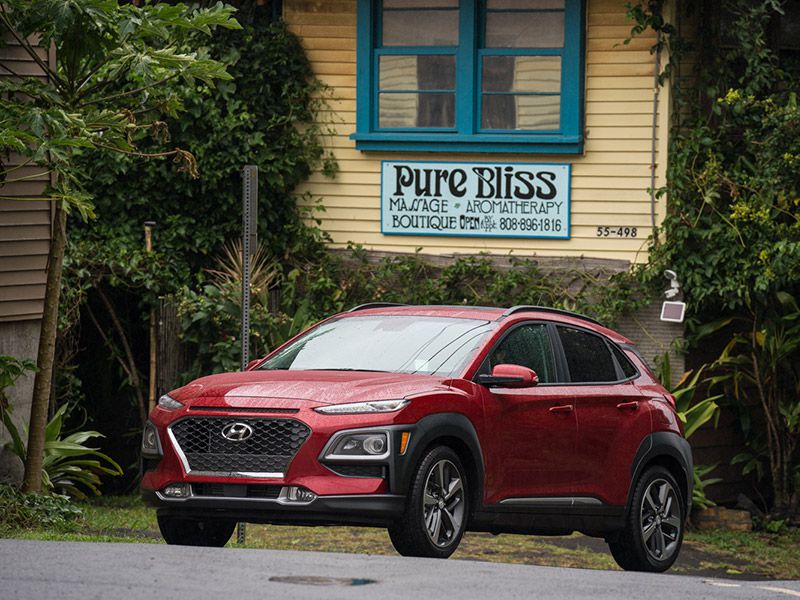
2018 Hyundai Kona front three quarter hero ・ Photo by Hyundai
The 2018 Hyundai Kona is an all-new subcompact crossover designed to appeal to the Millennial crowd. It’s cute and quirky with lots of personality, and it doesn’t care one bit if you think its style is a little out there. That’s the point of the Kona. It wants to stand out rather than blending in — and it succeeds.
In addition to its eye-catching style, the Kona offers two engines, a fully featured infotainment system, and attractive pricing. Here are 10 things you need to know about the new Kona.
1. You have your choice of two engines and front-wheel drive or all-wheel drive.
The Kona offers a choice of front-wheel drive or all-wheel drive on every trim. It also features two powertrains. The base SE and SEL trims have a 2.0-liter four-cylinder with 147 horsepower and 132 lb-ft of torque paired to a six-speed automatic transmission.
If you want more power, then you’ll have to go with either the Limited or Ultimate. These trims get a 1.6-liter turbocharged four-cylinder with 175 horsepower and 195 lb-ft of torque paired to a seven-speed dual-clutch automatic transmission.
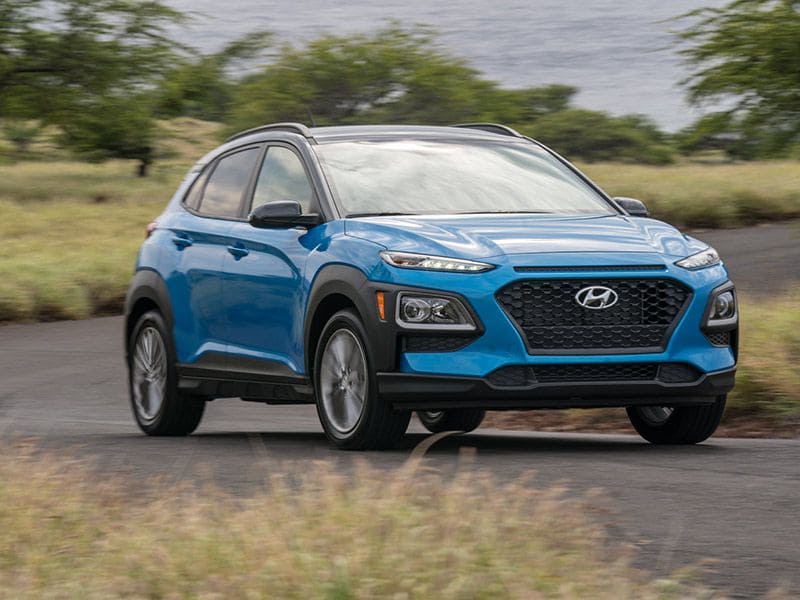
Photo by Hyundai
2. All four trim levels are affordably priced.
There are four trims, starting with the SE at $19,500. It’s equipped with the 2.0-liter four-cylinder engine, and standard features include LED headlights and daytime running lights, and keyless entry. The SEL adds a blind-spot warning and heated front seats and starts at $21,150.
The 1.6-liter turbocharged four-cylinder engine is standard beginning with the Limited trim at $24,700. Sitting at the top is the Ultimate at $27,400. It gets the turbocharged engine, a larger 8-inch touchscreen, wireless smartphone charging, a head-up display, a forward0collision warning with pedestrian detection, and lane-keep assist. The Kona is priced to keep you on budget.
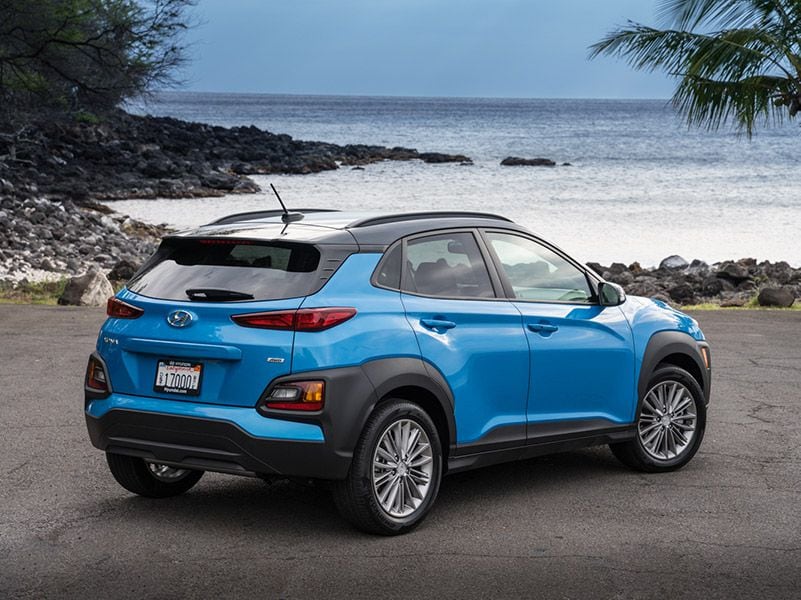
Photo by Hyundai
3. The Kona is designed to look like a Spartan helmet.
Designers get inspiration from all sorts of sources from nature to animals to buildings. The folks who worked on the exterior design of the Hyundai Kona were inspired by Spartan helmets. Stay with us for a minute and it will all make sense.
First, consider a Spartan helmet, which is a domed piece of metal with two cutouts for the eyes that lead down to a longer vertical gap. Now, look at the Kona head-on and see if you can find the Spartan helmet in its design. The lights mimic the eye slits, and the prominent grille is the opening on the front of the helmet. It brings new meaning to the term "road warrior."
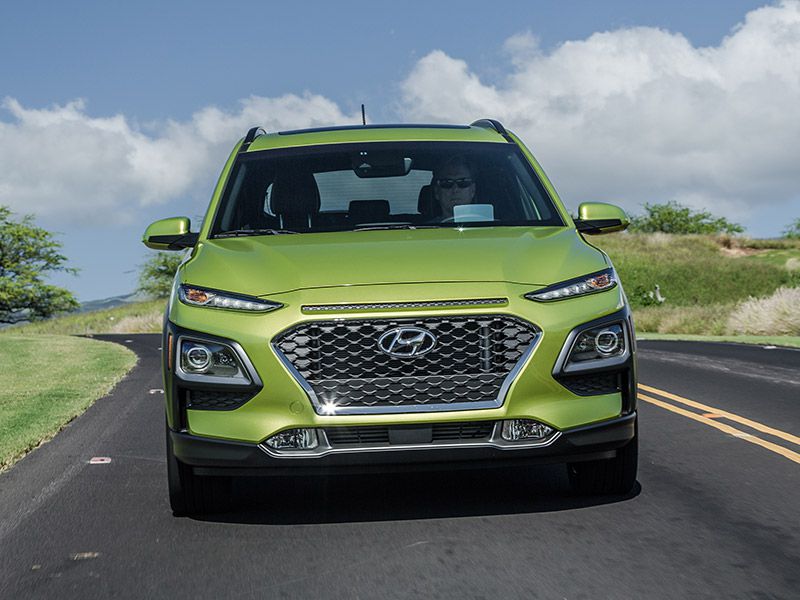
Photo by Hyundai
4. It’s bigger on the inside than it looks on the outside.
This is a subcompact crossover, so it looks downright small from the outside. But it's surprisingly roomy inside. The front seats are comfortable even for those with larger builds. You can technically fit three in the back, but it does get tight for more than two.
Part of the appeal of a crossover is its flexibility to carry cargo, and the Kona steps up to the challenge with 19.2 cubic feet behind the rear seats. Fold the seats down and that number expands to 45.8 cubic feet. If you need more room for cargo, the Kona can’t tow, but it does have roof rails that can support 176 pounds.
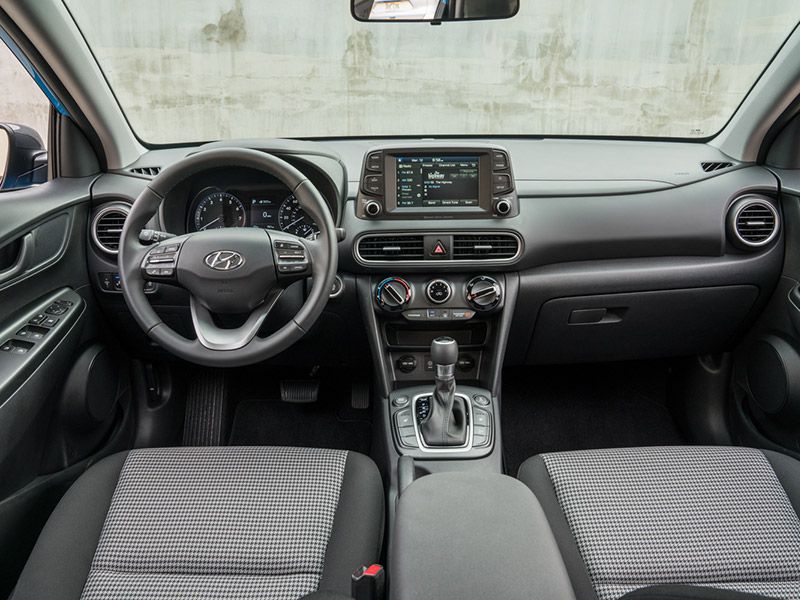
Photo by Hyundai
5. There’s a good mix of standard and available safety features.
While the base SE comes with few advanced safety features, take one step up to the SEL and there’s a standard blind-spot warning, rear cross-traffic collision warning, and lane-change assist. There are also options for additional safety features beginning with the SEL trim. These include forward-collision avoidance assistance with pedestrian detection, lane-keep assist, and a driver attention warning.
Despite being a higher trim level, the Limited drops availability of those optional features. They return for the top Ultimate trim, where they become standard rather than optional. The Ultimate is also the only trim to include reverse park distance warning and high-beam assist, which both come standard.
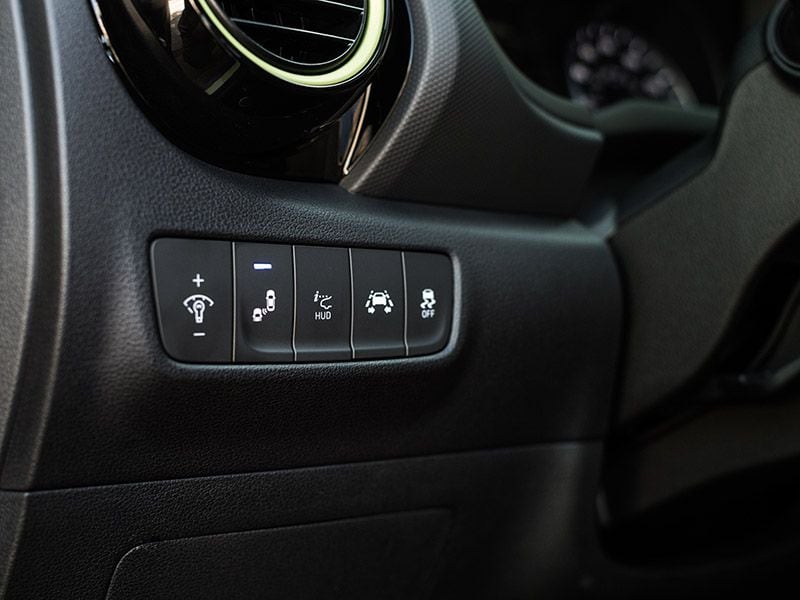
Photo by Hyundai
6. It has a flip-up head-up display that could save you money.
Head-up displays typically show information like speed, navigation, and radio stations in a reflection on the windshield in front of the driver. They’re a great way to keep the driver’s eyes focused on the road rather than the infotainment screen or instrument cluster. The head-up display in the Kona, which is a standard feature on the Ultimate trim, uses a plastic panel that rises from the dashboard instead of the windshield glass.
This is a more affordable way for Hyundai to accomplish a head-up display — and it could also save you money down the road. There’s a reflective coating on windshields with head-up displays, and it makes them more expensive to replace. The plastic panel eliminates this problem.
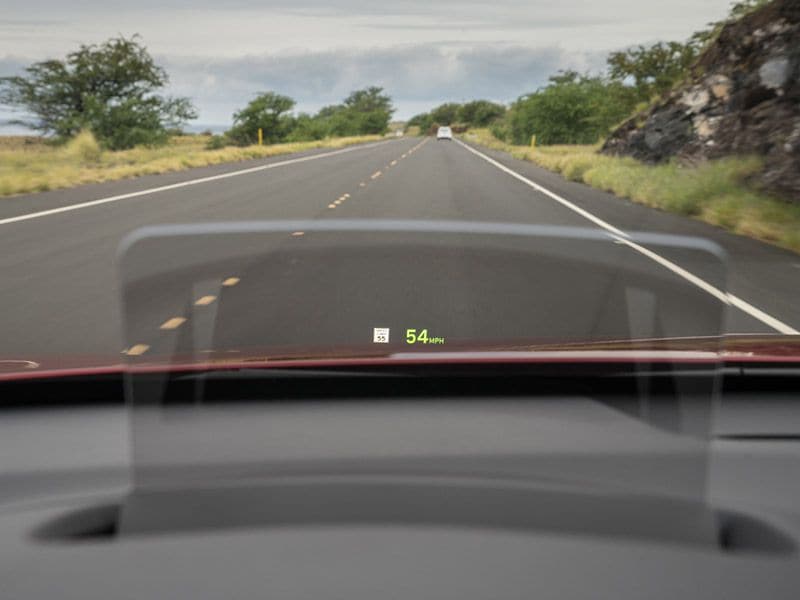
Photo by Hyundai
7. This isn’t an off-road crossover.
While some crossovers come with off-road capability, the Kona is for urban dwellers. It has only 6.7 inches of ground clearance, which puts it in the realm of sedans more than SUVs.
There is an optional all-wheel drive system to help with challenging road conditions, but it’s not designed to tackle off-road adventures. The most serious off-roading you’ll want to do in the Kona is a trek across the field they’re using as a parking lot at the state fair.
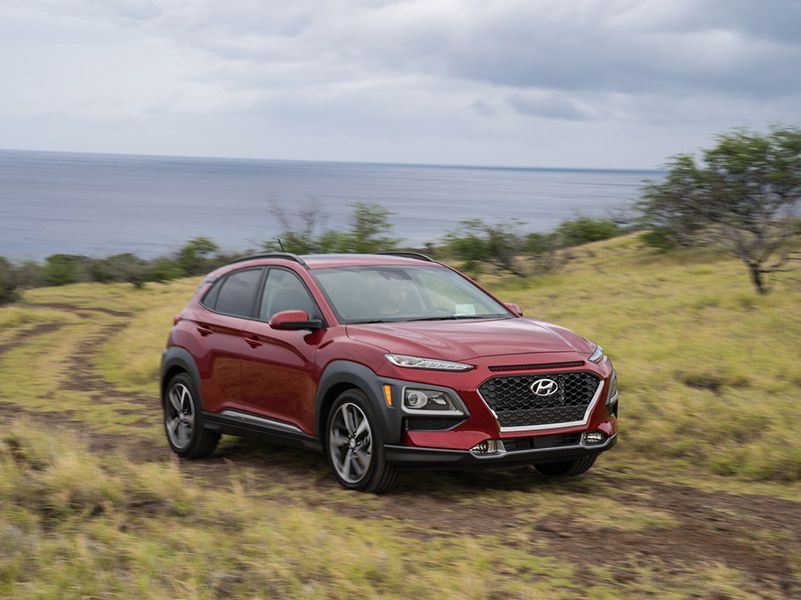
Photo by Hyundai
8. It has a fully featured infotainment system.
One of the drawbacks to affordable cars is a lack of infotainment features, but that’s not an issue with the Hyundai Kona. Base models feature a 7-inch floating touchscreen, which is bigger than what you sometimes find in more expensive vehicles. Bluetooth connectivity, Android Auto, and Apple CarPlay are also standard even in the base trim.
Sirius XM and HD radio make an appearance beginning with the SEL, while the top Ultimate trim gets the bulk of the upgrades. It features an 8-inch color touchscreen, Infinity audio system, navigation, and the head-up display for showing key information directly in front of the driver.
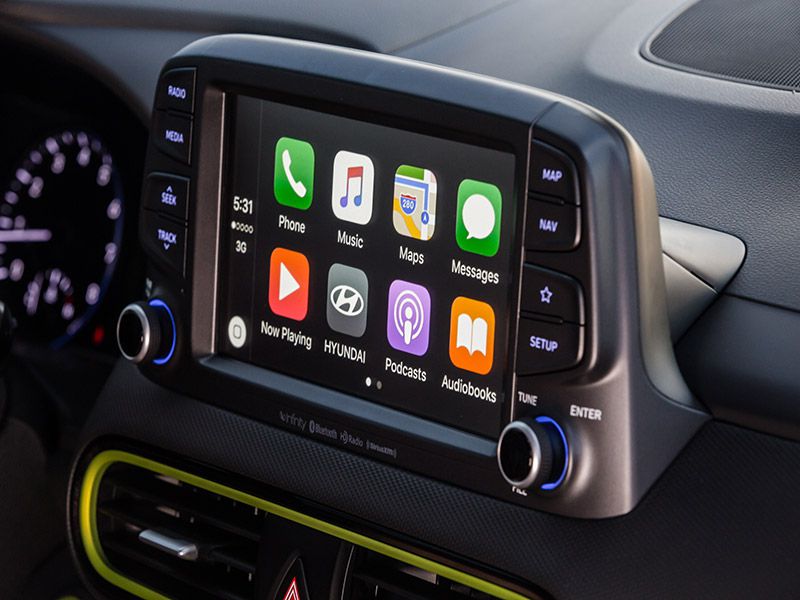
Photo by Hyundai
9. There’s hidden storage beneath the rear floor.
The Kona has good room for cargo behind the rear seats, but if you have smaller things you need to store, then there’s an extra hidden space you might not notice. The floor in the hatchback area lifts to reveal a tray with multiple sections. It’s perfect for holding things you want on hand but might not need to access often or for valuable items you want out of sight.
Put the floor back in place and you can still stack cargo on top with the compartments full. If you want to increase your overall cargo space, you can even remove the compartment to lower the floor by a few inches.
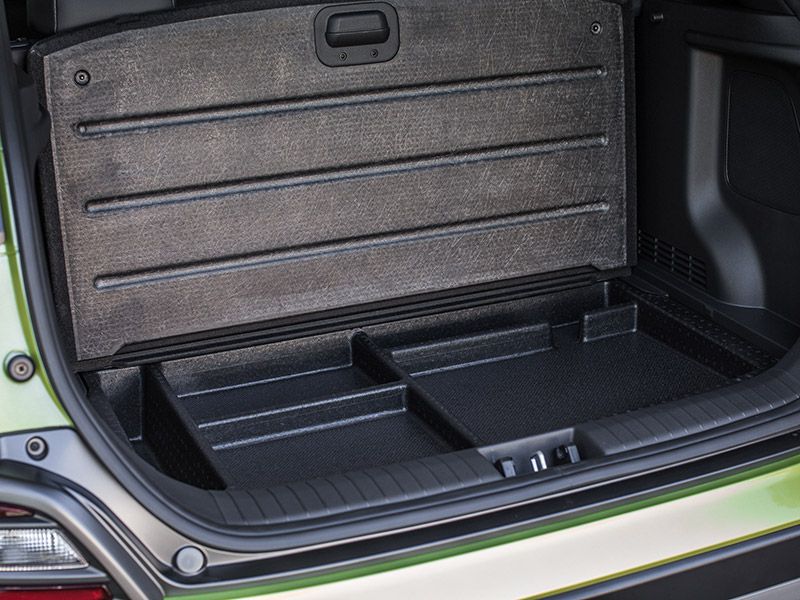
Photo by Hyundai
10. Excellent fuel economy lets you keep more of your money in your wallet.
Among the perks of buying a smaller crossover is fuel economy. They’re a great choice when you want the flexibility to carry cargo or people but don’t want to pay the fuel costs that come with full-size SUVs.
The Kona achieves an EPA-estimated fuel economy of up to 28 mpg in the city and 32 mpg on the highway equipped with front-wheel drive. All-wheel drive models still get up to 26 mpg in the city and 29 mpg on the highway.
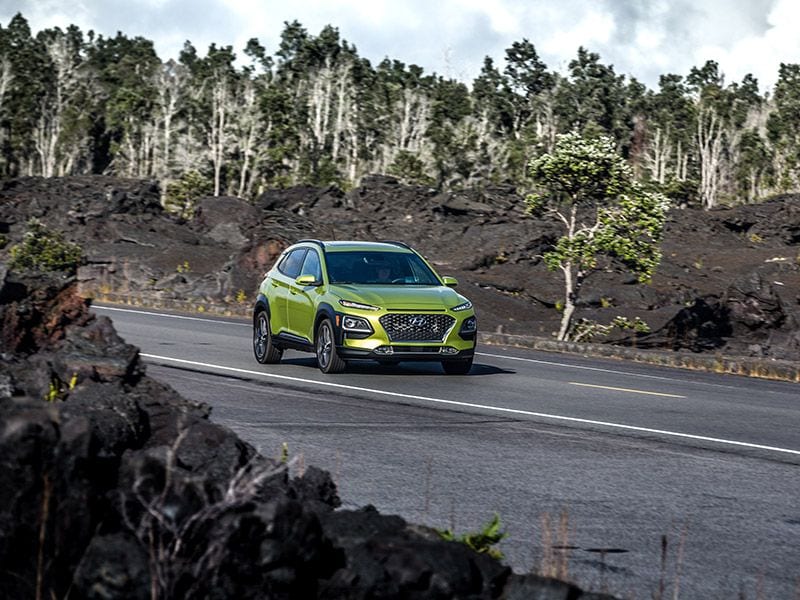
Photo by Hyundai